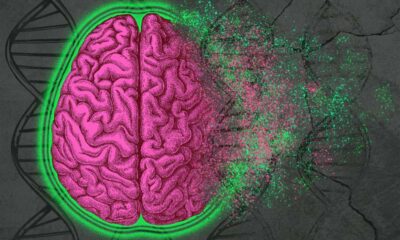Individual differences in anxious temperaments, which can be seen early in life, typically determine the resilience or risk for the development of anxiety disorders and psychopathology connected to stress. Anxiety disorders have been linked to behavioral inhibition, a temperament in which a person reacts hypervigorously to dangers, particularly in unfamiliar or unknown settings. The probability of serious depressive disorders, anxiety disorders, substance abuse, and other internalizing spectrum mental health problems is greatly increased in early life by behavioral inhibition.
Since early childhood is a common time to detect behavioral inhibition, early interventions can be used to veer children who demonstrate behavioral inhibition away from stress-related psychopathologies. Developing these therapies requires an understanding of the brain circuits and molecular mechanisms underpinning behavioral inhibition. Since behavioral inhibition in non-human primates is very comparable to that of humans, non-human primate nervous temperament models are a great way to learn about the underlying mechanisms of these disorders.
Concerning the study
The current study employed a transcriptome technique to find molecular markers associated with individual differences in anxious temperament in non-human monkey models located in the posterior orbitofrontal cortex. The posterior orbitofrontal cortex, dorsolateral prefrontal cortex, and subgenual anterior cingulate cortex are thought to be involved in the neural circuit alterations linked to variations in anxious temperament in non-human primate models, in addition to the subcortical regions like the brainstem periaqueductal grey, anterior hippocampus, and amygdala.
The subcortical portions of the nervous temperament circuit, which are also connected to variations in the threat-related metabolism among individuals, are believed to be regulated by the neural circuit in the posterior orbitofrontal cortex. It is hypothesized that lesions in the extended amygdala bed nucleus of the posterior orbitofrontal cortex affect both threat-related metabolism and nervous temperament. Additionally, there is a strong correlation between this region and the amygdala, which is thought to be the hub of the nervous temperament circuit.
Ribonucleic acid (RNA) samples were taken from the deep and superficial layers of the posterior orbitofrontal cortex using laser capture microdissection, in light of the evidence currently available regarding the role the posterior orbitofrontal cortex plays in the individual variations in the anxious temperament phenotype. In order to characterize gene expression, RNA sequencing was done. Additionally, the laminar transcriptional differences were evaluated across the superficial and deep layers in light of the variations in the functional and connectional features of the neurons in the region’s numerous cortical laminae.
Furthermore, for cell types that were transcriptionally characterized in the posterior orbitofrontal cortex, a single nuclear RNA sequencing approach was employed to identify particular neuronal subsets that mediate the effects of the molecular changes linked to anxious temperament in the non-human primate models.
Outcomes
The study discovered several molecular pathways in the posterior orbitofrontal cortex that are responsible for the individual differences in nervous dispositions observed in non-human primates. There were notable differences in the transcriptomes of the neurons located in the deep and superficial layers of the posterior orbitofrontal cortex. Additionally, the findings revealed a connection between laminar transcription and anxious temperament, with individual differences in cortisol expression in response to ambiguous stress in the superficial and deep layers of the posterior orbitofrontal cortex.
In addition to providing new understanding of the molecular mechanisms in the posterior orbitofrontal cortex responsible for controlling the anxious temperament phenotype, the findings also identified putative molecular targets for the prevention and treatment of anxiety and depressive disorders.
Caldesmon was one of these targets since it has the ability to modify the plasticity of the deep layer neurons connected to the subcortical regions mediating anxious temperament through glucocorticoid receptors. The association between posterior orbitofrontal cortex plasticity and anxious temperament may be better understood, according to the scientists, if more study is conducted using viral vectors to overexpress posterior orbitofrontal brain structures relevant to anxious temperament.
In conclusion
Overall, the results showed that individual differences in the transcriptomes of the neurons within the posterior orbitofrontal cortex are connected to individual variations in the anxious temperament phenotype. In addition, the study discovered putative biological targets for the prevention and treatment of anxiety disorders, including those connected to glucocorticoid signaling.

 Diabetology2 weeks ago
Diabetology2 weeks ago
 Diabetology2 weeks ago
Diabetology2 weeks ago
 Diabetology1 week ago
Diabetology1 week ago
 Diabetology1 week ago
Diabetology1 week ago
 Diabetology1 week ago
Diabetology1 week ago
 Diabetology2 weeks ago
Diabetology2 weeks ago
 Diabetology1 week ago
Diabetology1 week ago
 Diabetology2 weeks ago
Diabetology2 weeks ago


















